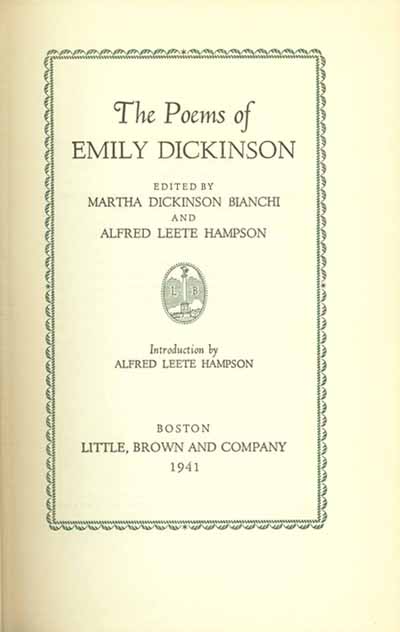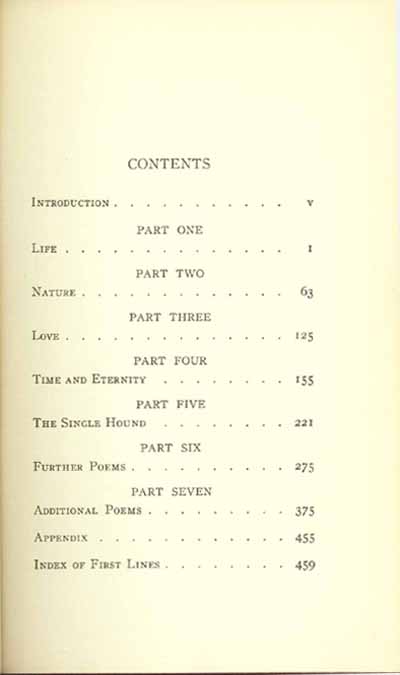"Emily
met her fate."1
According to them, two predestined souls recognized each other,
— the man a powerful preacher, a scholar, a poet, already
married. The inevitable renunciation followed. Its effect,
however, was to be enduring. For Emily, all had no codicil. In
the old familiar places and ways she took up her life again, not
choosing to withdraw from the world — at least not all at once
nor definitely at first — but gradually, irresistibly, as her
own work and premonition drew her. Her poems became her
absorbing passion, those poems from whose publication she recoiled,
and which were only made known to the world after her death.
Not
until 1890 did a selection of these poems appear, made available by
her sister Lavinia, to be followed shortly by two additional
selections. Many years later, in 1914, her niece, Martha
Dickinson Bianchi, presented another volume entitled The Single Hound,
composed of poems written by Emily Dickinson to "Sister
Sue", her brother's wife. The war intervened, and in the
deluge of free verse which followed, Emily Dickinson was submerged.
For a decade nothing more was published. The critics, and
the general public as well, left her to the devotion of her
self-styled initiates.2
Undeterred
by the apathy of public and publishers, however, these enthusiasts
imposed it as a duty upon her niece — as the only surviving
member of the family, who had lived beside her day by day — to
give them some actual recreation of the
poet as a woman, and of her unique background. The Life and Letters3
was, therefore, presented in 1924. Its reception was an
overwhelming surprise. Written at the instigation of and for a
limited special public already steeped in her po-
1
See Emily Dickinson Face to Face,
Martha Dickinson Bianchi, Houghton Mifflin Company; pp. 48-53.
2
See Foreword to Emily
Dickinson Face to Face; pp. ix-xiii.
3
The Life and Letters of Emily Dickinson,
Martha Dickinson Bianchi, Houghton Mifflin Company.


